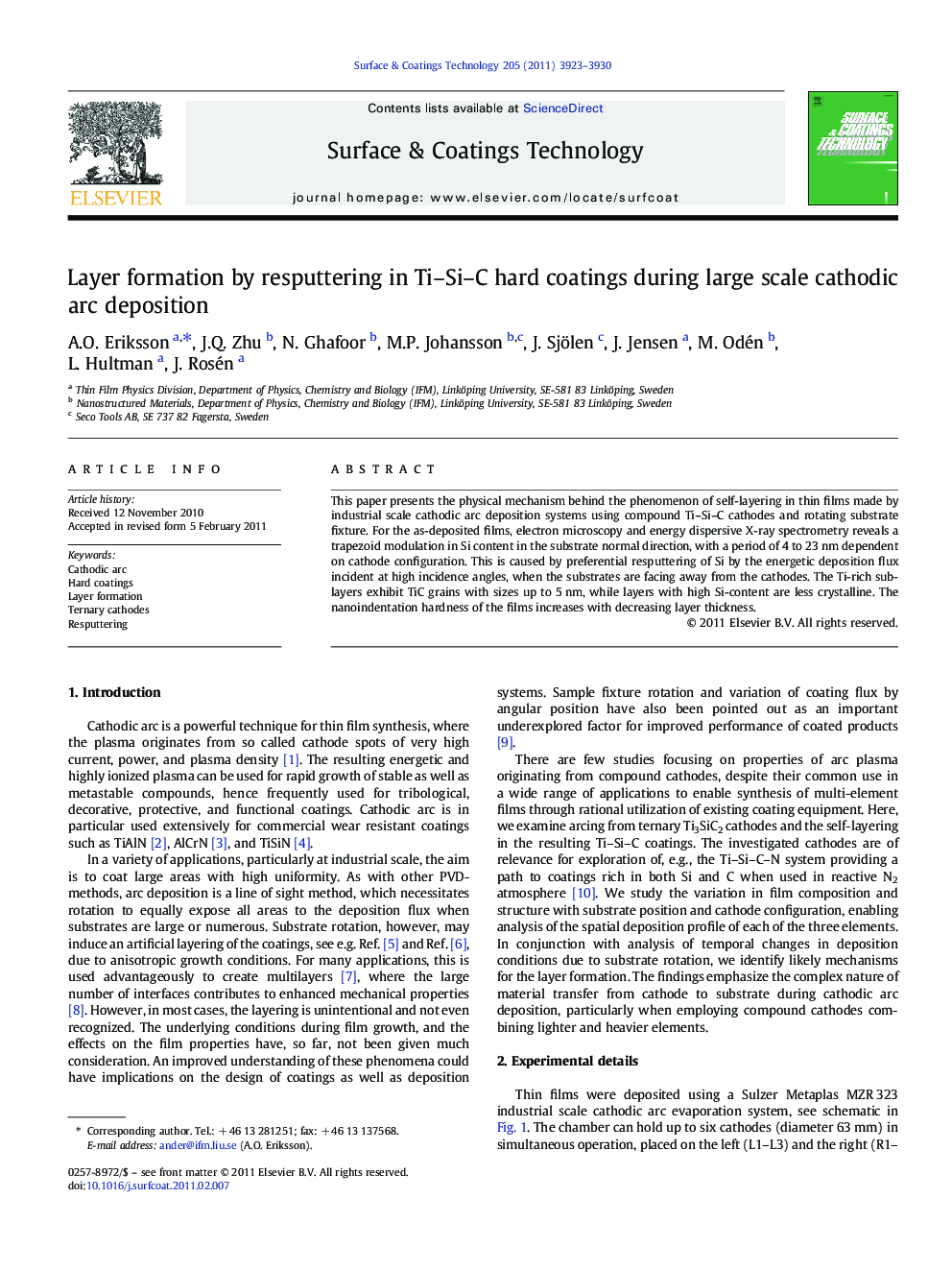| Article ID | Journal | Published Year | Pages | File Type |
|---|---|---|---|---|
| 1659286 | Surface and Coatings Technology | 2011 | 8 Pages |
This paper presents the physical mechanism behind the phenomenon of self-layering in thin films made by industrial scale cathodic arc deposition systems using compound Ti–Si–C cathodes and rotating substrate fixture. For the as-deposited films, electron microscopy and energy dispersive X-ray spectrometry reveals a trapezoid modulation in Si content in the substrate normal direction, with a period of 4 to 23 nm dependent on cathode configuration. This is caused by preferential resputtering of Si by the energetic deposition flux incident at high incidence angles, when the substrates are facing away from the cathodes. The Ti-rich sub-layers exhibit TiC grains with sizes up to 5 nm, while layers with high Si-content are less crystalline. The nanoindentation hardness of the films increases with decreasing layer thickness.
Research highlights► Investigated origin of self-layering in industrial scale arc deposition systems. ► Modulations of composition and crystallinity due to layering qualitatively analyzed. ► Use of non-conventional ternary cathodes for synthesis of Ti–Si–C hard coatings. ► Compositional changes due to self sputtering during arc deposition concluded. ► Trends suggested for quantified change in film hardness with layer formation.
